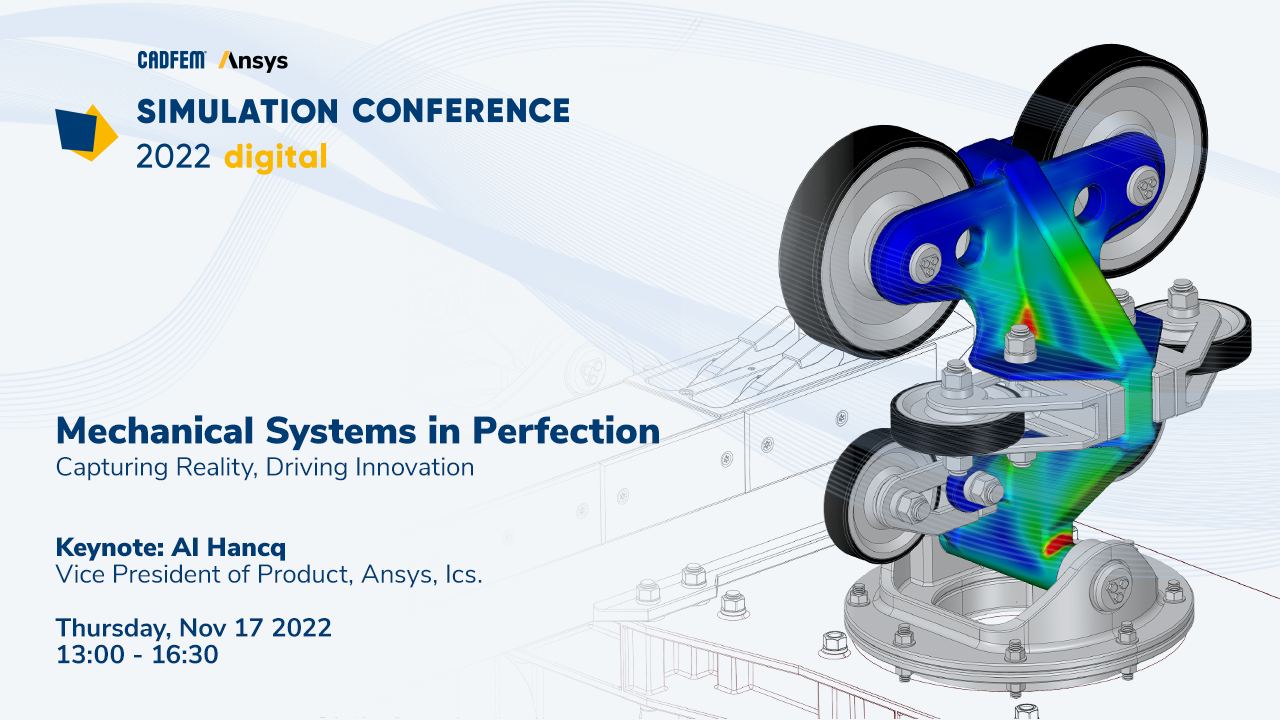CADFEM provides simulation tool for Strama-MPS clamping unit
Always stay within the frame
Strama-MPS Maschinenbau GmbH & Co. KG is a special-purpose machinery and equipment manufacturer with a focus on the automotive and automotive supplier industry. Precision-fit solutions and assemblies have been produced in Straubing for over 75 years. A leading automotive manufacturer approached the Strama-MPS team with the task of designing a stenter frame for car body parts. The tool mechanism is part of an automated prototyping system that also uses robots. CADFEM was responsible for developing a program to easily design the frame structure using simulation.
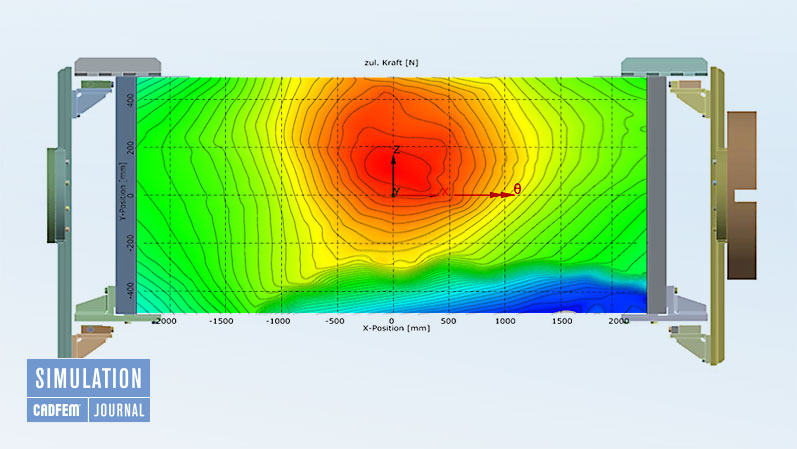
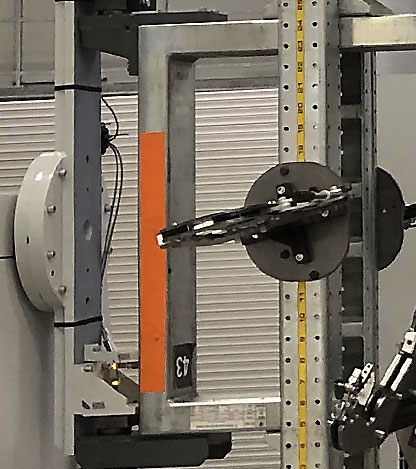
Clamping unit for stenter frame
Exceptional features of the clamping device are the large dimensions, the swiveling capability and the considerable range of assembly variants with a wide variety of parts. The stenter frame is attached on both sides to a fixure with a 180° swivel axis.
Clamping plates with clamping levers can be mounted on the frame on both the front and rear sides. These hold the various body parts to make them more accessible for machining and assembly with horizontal turning movements. Depending on the configuration of the clamped parts, the weight and center of gravity change during the machining process. At the same time, the goal is to maximize the capacity of the turning frame. This flexibility in application presented the developers at Strama-MPS with a major challenge in terms of designing the strength of the frame.
Strama-MPS developed the clamping unit for production automation for a prototype cell at a car company, and these units have to be replaced several times a year, depending on the vehicle model. The design staff decides what should be fixed on the stenter frame. New devices , in turn, means a change in the loads on the turner and requires up-to-date calculations to determine the load limit. Generally, a computational engineer would have to check and approve the respective fixture situation. This is an effort that, considering the high variances, literally goes outside the frame in terms of time and cost.
About Strama-MPS
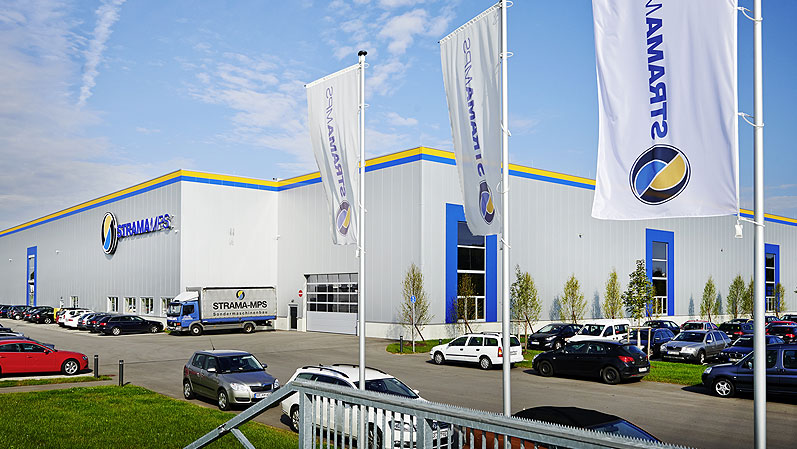
Strama-MPS develops special-purpose machinery, equipment and complete solutions for the production, assembly and testing of complex technical components and products. Founded as a one-man business in 1946, Strama-MPS has developed into an outstanding technology leader in the automotive and automotive supply industry with over 1600 employees worldwide.
Easy to use calculation app
Decision makers at Strama-MPS have therefore turned to CADFEM, because in addition to the reduction in effort, ensuring process reliability was a priority. The specialists for simulation suggested to first analyze the situation in detail with the proven Ansys software, and subsequently to create an easy-to-use program on this basis, which would provide the necessary reliability.
From a design point of view, this program is simply an input mask in which the total center of gravity planned for the stenter frame is entered. The designer then immediately receives color-coded feedback from the app as to whether or not the planned assembly complies with the load limits for the frame. There is no faster, simpler and more reliable way to carry out an analysis with the best possible traceability.
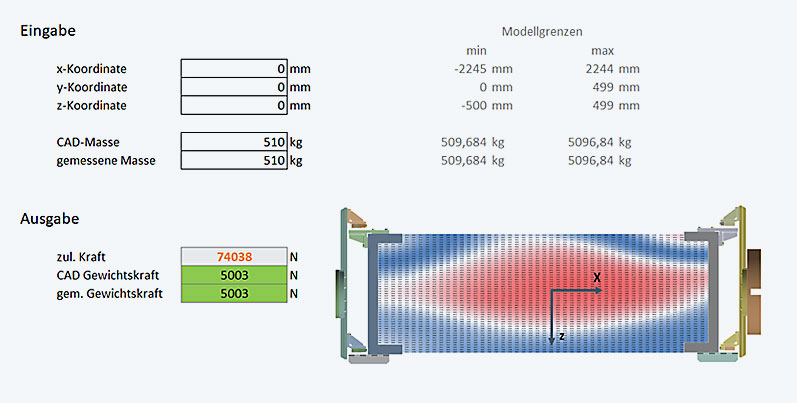
Maximilian Brunner, Project Manager BU Body in White, Strama-MPS Maschinenbau GmbH & Co. KGThanks to the heatmap app generated by CADFEM, the design department of our customer is able to easily check directly in CAD whether the stenter frame is designed accordingly for the new devices. This has given the sports car manufacturera huge time and financial advantage.
Complex path to simulation
What seems so simple in operation required considerable background expertise. One reason is the enormous complexity of the decisive parameters. Simulation experts thus reduced the calculation effort in the first step to the essential points in the model without weakening the informative value. Furthermore, the focus of the simulation is on the strength of the frame and not on the clamping units and the clamped components. Therefore, these could be represented within the simulation using a simple mass point.
This has the advantage of working with a reduced model in which only certain parts of the frame and the connection points up to the bearings have to be examined. The bearings themselves were not required. Instead, the focus was on the question of failure of the connecting elements of the frame structure, with the corresponding bolts, connections and welds according to the various positions of the center of gravity and angles.
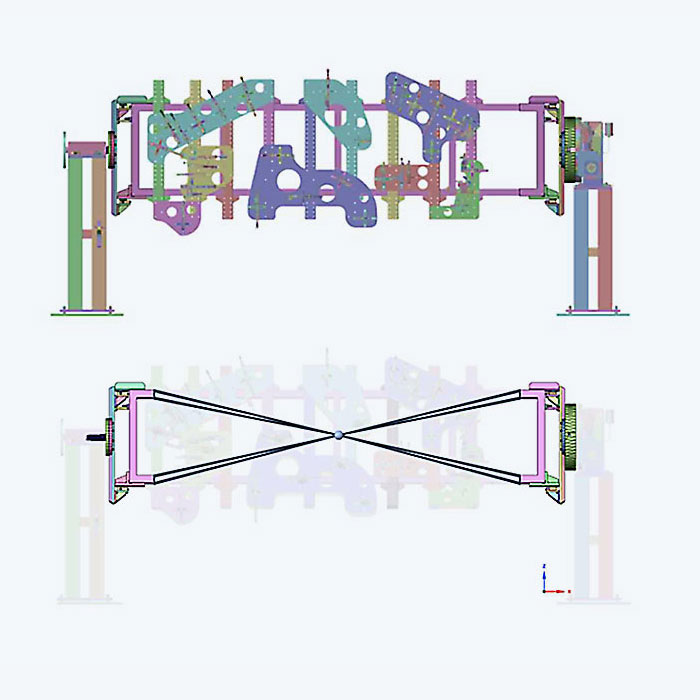
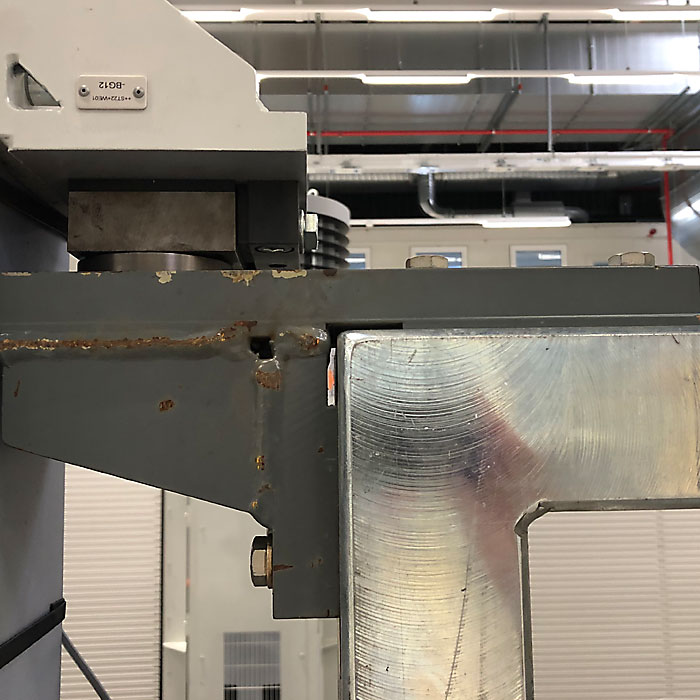
CADFEM tools target-oriented
Years ago, CADFEM developed two software tools specifically for the simulation of weld seams and bolts, which provide valuable services in this regard. “FKM inside Ansys” is based on the FKM guideline and evaluates welds as well as unwelded components. “Bolt Assessment inside Ansys” evaluates bolts according to VDI 2230. For the overall assessment of the stenter frame, two separate simulations have been performed with the CADFEM tools for about 50 bolts and 70 welds that are loaded differently depending on the tilt angle and placement. Everyone is familiar with the representation of a typical FEM calculation on the model with color gradients. In this case, about 400 such illustrations would overlap, which is why the representation in the form of a so-called “heat map” was used. This overview map very clearly indicates the critical or “hot” zones in a coordinate system as a function of the angle and the force.
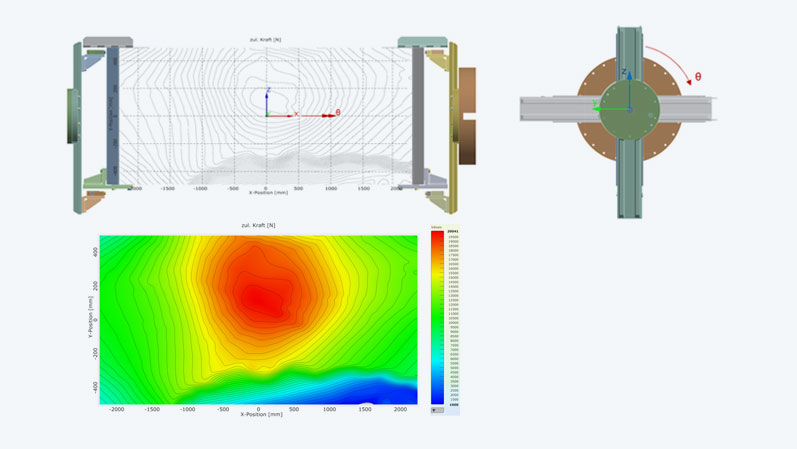
The dimensioning of a component or a weld seam can already be tested in the design phase. With CADFEM “FKM inside Ansys”, an automated service or fatigue strength verification for mechanically stressed components according to the FKM guideline can be performed in the shortest possible time. The final report generation includes the complete description of the verification parameters used.
Skillful combination for the simulation model
The vast experience of CADFEM experts can be seen in the structure of the simulation model and in the skillful combination of CADFEM and Ansys software. The simple question of whether the structure would hold or not had to be answered, even though the structure exhibited strong nonlinear behavior with an almost infinite number of parameters. Therefore, optimization with metamodels was necessary to get back into the finite domain.
Model preparation, in terms of suitable 3D CAD data, is done by Ansys Space Claim. The static-mechanical analysis as well as the validation of the stenter frame design is done in Ansys Mechanical. For evaluation and strength verification, ANSYS Pre/Post is used in conjunction with CADFEM “FKM inside Ansys” and CADFEM “Bolt Assessment inside Ansys”. The decisive optimization and the statements on sensitivity are made with Ansys optiSLang version.
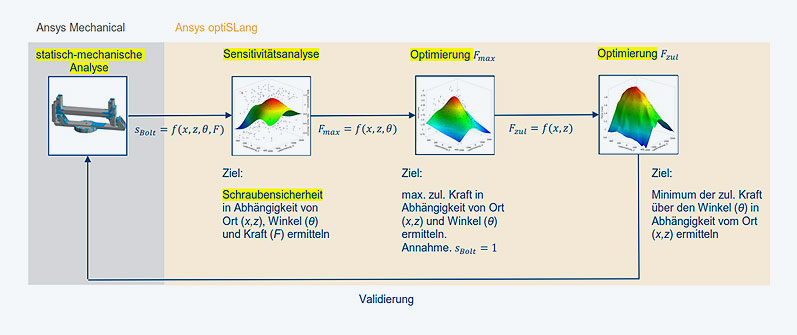
Bolts connect components and must reliably withstand their loads, usually over a long period of time and with varying loads. With “Bolt Assessment inside Ansys”, you can evaluate all load cases and find critical loads in the bolted joints. Calculation and verification are carried out automatically, quickly and conveniently according to guideline VDI 2230.
Five dimensions, one result
Ansys optiSLang also made it possible to take five dimensions into account during the calculation, which were then further broken down into three in the result. The five dimensions include the x- and the y-direction as well as the angle of rotation. The fourth dimension in the calculation is the amount of force applied, followed by the fifth dimension, which is the percentage of utilization of the structure. As a result, the user receives the permissible force as a function of the two dimensions x and y, at which the structure is subjected to the maximum load.
Process reliability and successful optimization
With the help of this simulation model, it was possible to determine the maximum permissible load as a function of the changing load application point. The numerous results can be quickly visualized in the clearly arranged heat map. The individual values of the coordinate system were stored in a write-protected CSV file in MS Excel, which in turn serves as the basis for the input mask of the design app. For Strama-MPS, this was a successful implementation of the request to make a complex simulation with CADFEM support easily accessible to users.
In addition, valuable insights for optimization were gained, because the simulation model resulted in a maximum permissible load of the previous structure of 2043 kg at its strongest point. Using additional bolts or welded joints, it would even be possible to achieve a maximum load-bearing capacity of 3000 kg. The results show once again how helpful and reliable correctly applied simulation is in the product development process. You don't have to be a professional yourself to use simulation professionally. CADFEM offers its vast experience in making simulation one of the richest sources for increasing efficiency in development and design. Strama-MPS is a good example of how CADFEM always keeps reliability and costs within the frame.

Strama-MPS Maschinenbau GmbH & Co. KG
Maximilian Brunner
www.strama-mps.de
Author: Thomas Löffler (freelance editor)
Images: © Strama MPS
Published: October, 2022
Contact CADFEM





